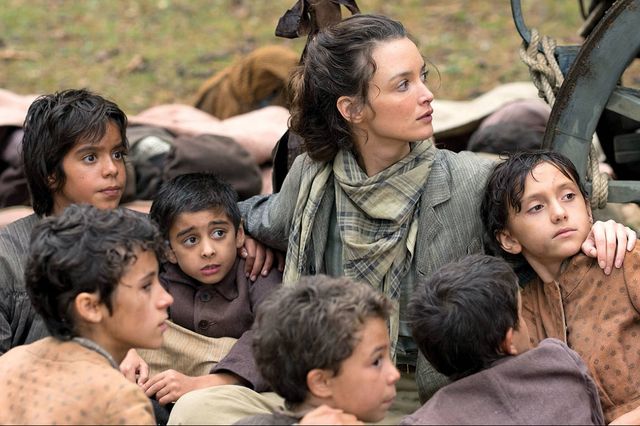A wide-ranging panel discussion at the Hammer Museum at UCLA delved into the challenges of using film to depict genocide and ethnic conflict. The event, held April 6, featured Terry George, an Academy Award-nominated writer and director; Dr. Eric Esrailian, a professor at the David Geffen School of Medicine at UCLA; and Stephen D. Smith, executive director of the University of Southern California Shoah Foundation.
George is the director and co-writer, and Esrailian a producer, of a new feature film called “The Promise,” which is set during the 1915 Armenian genocide, and is set for a wide premiere April 21.
Esrailian, a digestive disease expert and philanthropist, also sits on the executive board of UCLA’s School of Theater, Film and Television and has been involved in developing the school’s Skoll Center for Social Impact Entertainment. He said one hurdle for the filmmakers is that the events of 1915 are still so poorly understood by the general public.
“One of the challenges is the lack of general awareness of the Armenian genocide,” he said. “Because the denial has been so heavy, it crushes the truth. You have to counteract that.”
That meant striking a careful balance: telling a story through specific characters while also establishing the facts around historical events. George said finding an empathetic person to serve as the focal point can be the key to taking on an emotionally difficult subject in a film. So “The Promise” uses fictional characters who, George said, “allow us to walk through the tumultuous events that defined the Armenian genocide.”
► Video: Watch the entire discussion about depicting genocide in film
In addition to writing and directing “The Promise,” George was the co-writer and director of “Hotel Rwanda,” and his other projects have examined the Vietnam War and the conflict in Northern Ireland. Creating sympathetic protagonists is one of the important ways to draw viewers into stories about such major conflicts, he said. “An ordinary person who transcends the horrible situation they are put in and, in battling against it, proves our own humanity,” he said.
Smith said that balancing historical accuracy with interesting storylines is a tension that frequently arises in historical films aimed at mass audiences.
“Filmmakers want to keep the engagement of the audience,” he said. “The telling of the story is what’s going to do that and, therefore, artistic license is a really important part of that process.”
But that can raise questions about historical accuracy and credibility — something Smith said can be mitigated in part through close collaboration between scholars and filmmakers.
George said filmmakers have to research and source their work as accurately as possible so their films’ truthfulness isn’t in question.
The film’s release date is within days of both Armenian Genocide Awareness Day and Holocaust Remembrance Day, which this year both fall on April 24. Smith pointed out that April is also the month during which the Cambodian genocide began and that the movie premiere falls during the 100-day period of commemoration of the Rwandan genocide.
“Survivors are still feeling the pain of those events,” he said, adding that the confluence of those anniversaries and commemorations are “good opportunities for communities to come together, because the grief that is shared is universal.”
Esrailian said the new film has struck an emotional chord with audiences who feel connected to the Armenian genocide. “Art can allow people to heal,” he said. “That’s why we made the movie.”





